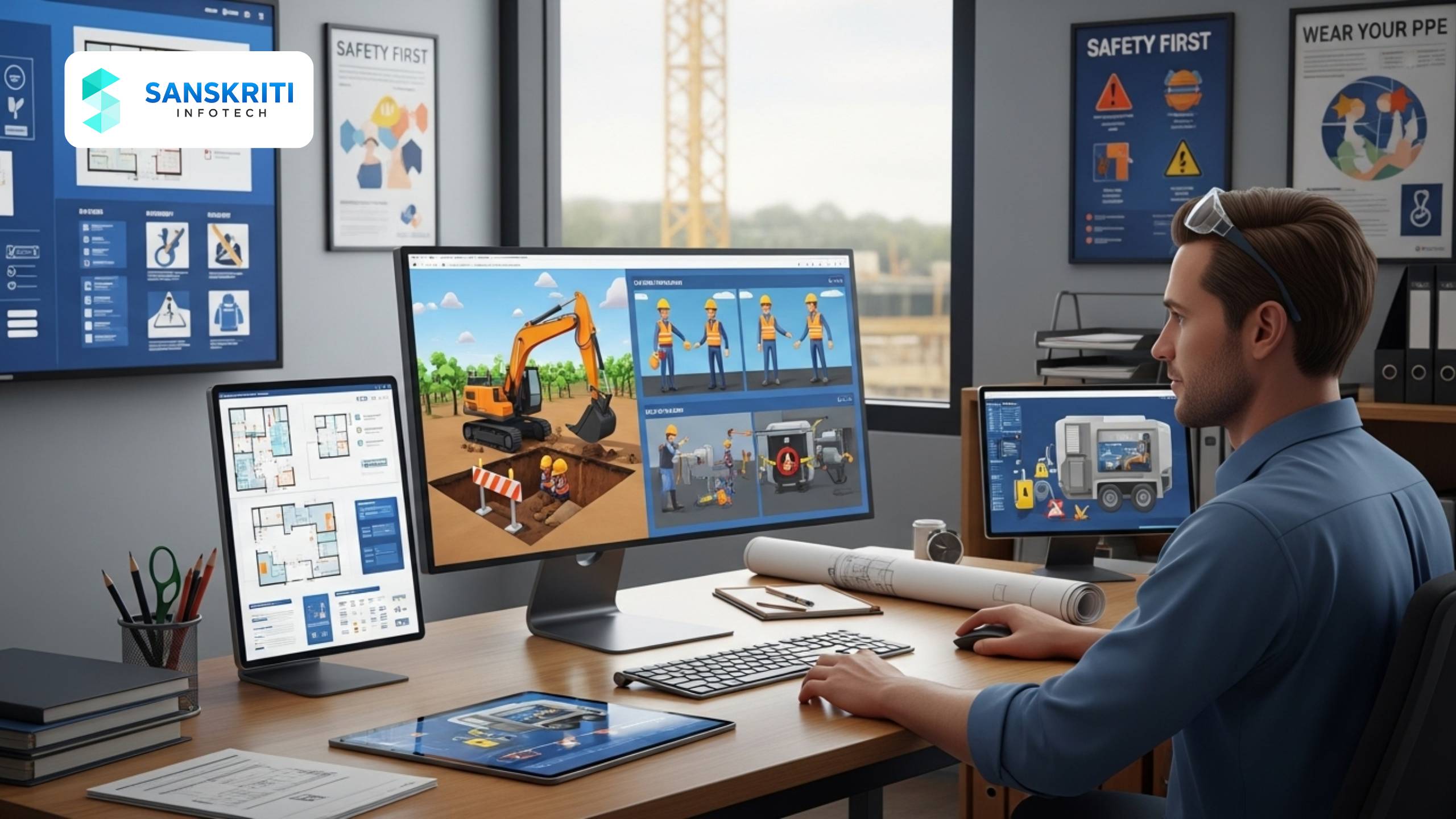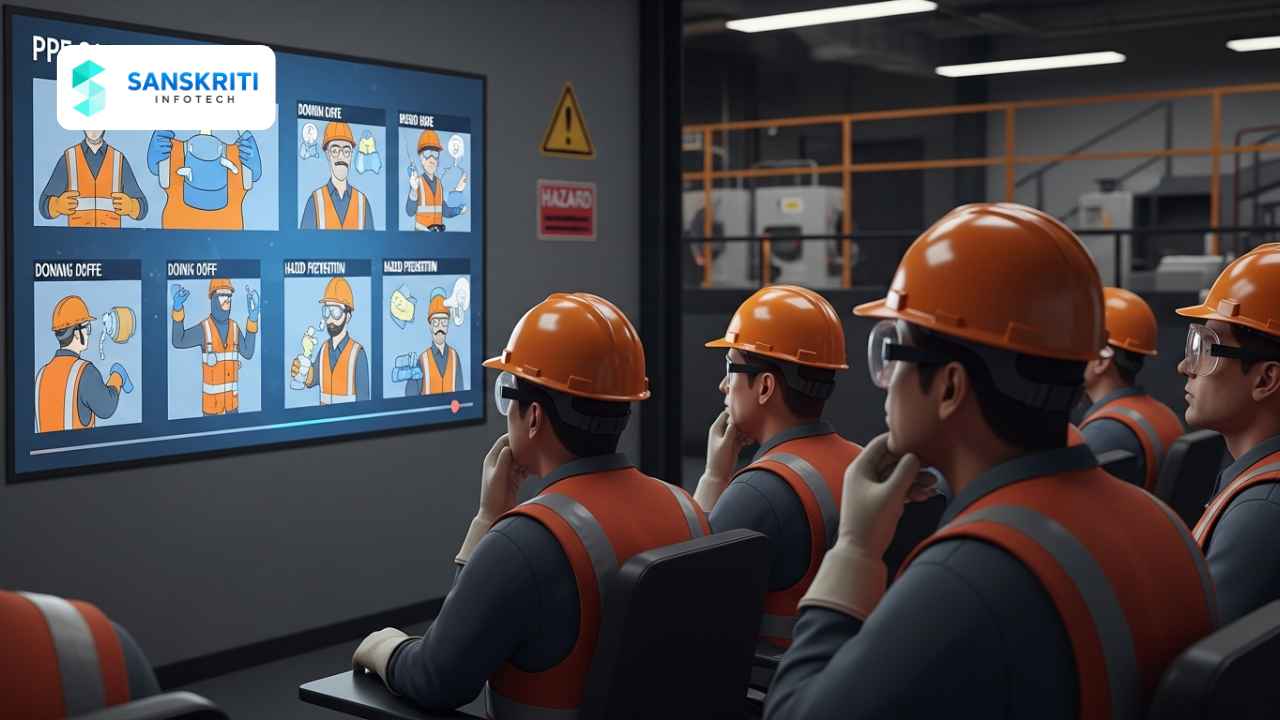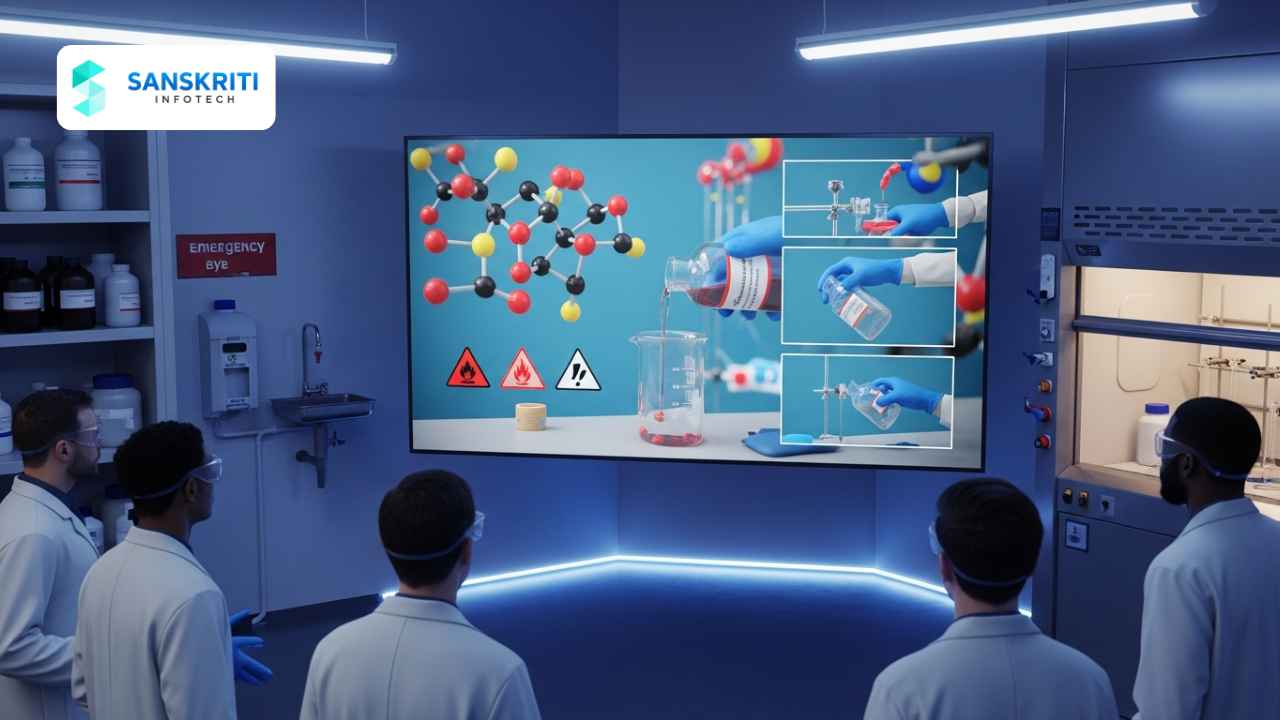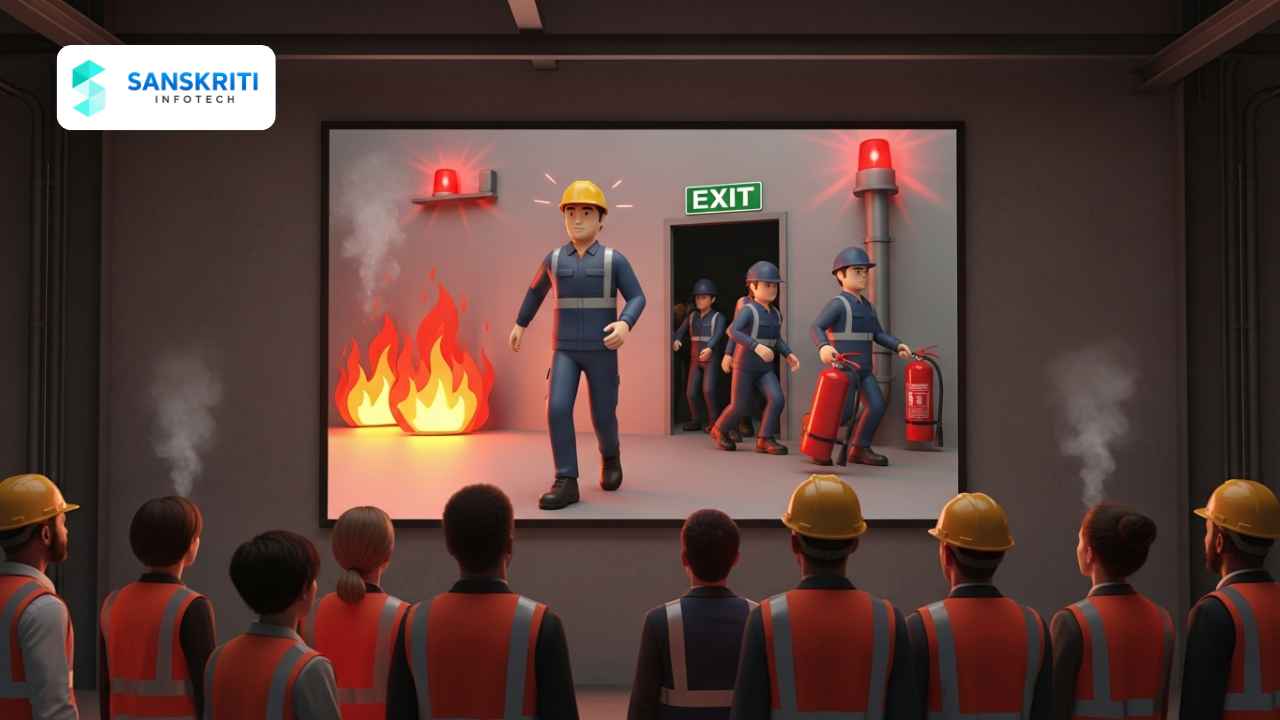Table of Contents
Introduction
Site safety training programs are essential for reducing workplace accidents and ensuring compliance with safety standards. Whether it’s a construction site, manufacturing plant, or warehouse, effective safety training helps workers recognize hazards, follow protocols, and respond to emergencies.
But traditional methods—manuals, lectures, PowerPoints—often fail to engage. That’s where 3D animation technology steps in.
This blog explores how 3D animation transforms site safety training programs into engaging, consistent, and effective learning tools. We’ll also discuss use cases, benefits, and how organizations are leveraging this powerful medium to improve workplace safety.
What Are Site Safety Training Programs?
- – Structured safety instruction for site workers and contractors
- – Covers topics like hazard recognition, PPE, evacuation, emergency response, SOPs
- – Required during onboarding and refresher training
- – Ensures compliance with OSHA, ISO, and company-specific protocols
Why Traditional Training Methods Fall Short
- – Low engagement during slide-based or verbal sessions
- – Inconsistent delivery across teams and trainers
- – No visual context for real-life scenarios
- – Limited retention and recall under pressure
How 3D Animation Improves Site Safety Training
- – Visual Realism: Replicates your actual site and conditions
- – Scenario-Based Learning: Simulate fire drills, lockout/tagout, fall prevention
- – Universal Understanding: Reduces language and literacy barriers
- – On-Demand Access: Employees can review anytime via LMS or mobile
- – Customization: Tailor content for roles, zones, or procedures
Case Study: Construction Site Training Program
- – A leading construction firm deployed 3D safety animations for their project teams.
- – Modules covered:
– Working at height procedures
– Fall arrest system training
– Equipment handling and zone demarcation - – Outcomes:
– 70% reduction in repeat safety violations
– 50% faster onboarding time
– High engagement across multilingual teams
What Makes a Strong 3D Safety Training Program
- – Use your actual site blueprints for authenticity
- – Incorporate hazard identification exercises
- – Include emergency scenarios like fires or chemical spills
- – Multilingual narration or subtitles
- – Track completion via e-learning platforms
Industries That Benefit Most
- – Construction
- – Manufacturing
- – Oil & Gas
- – Mining
- – Logistics & Warehousing
- – Pharmaceuticals
Conclusion
3D animation has revolutionized how organizations deliver site safety training programs. It makes training more realistic, engaging, and scalable—while reducing risks and non-compliance.
If your site safety training feels outdated or inconsistent, it’s time to invest in 3D technology.
At Sanskriti Infotech, we design custom, high-impact 3D animated safety programs for any industry.
📞 Ready to elevate your training? Let’s build a safer site—together.






